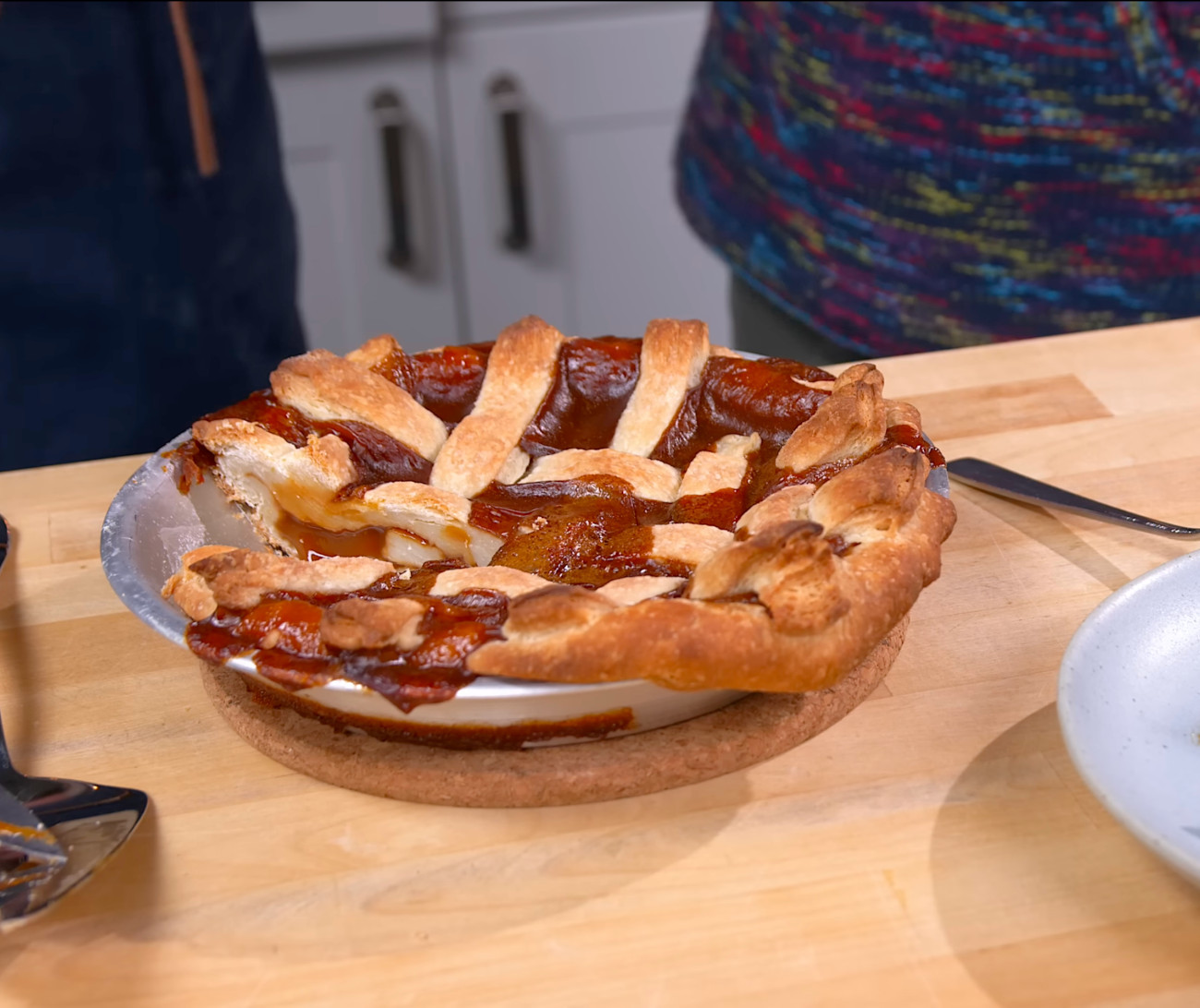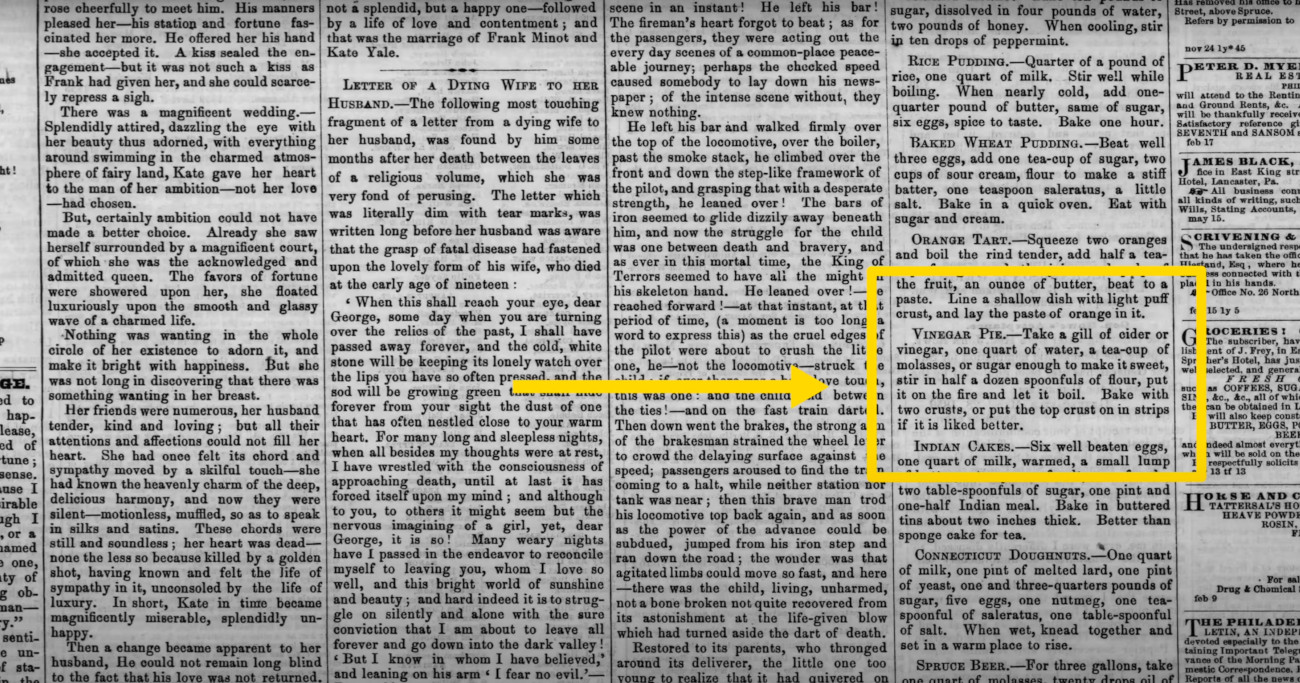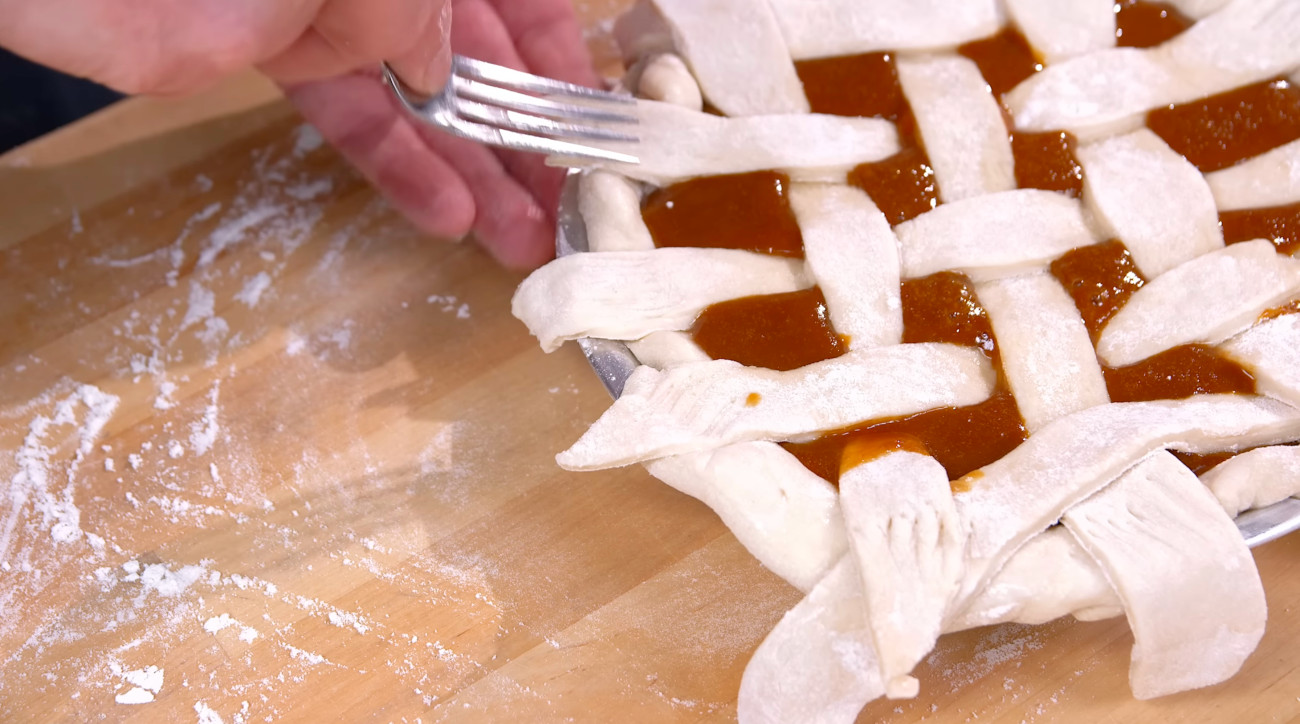Do a quick search on the internet for vinegar pie, and you’re bound to find similar answers. Vinegar pie is immediately associated with the Great Depression, small blogs and major publications alike produce the same conclusions, but are these similar answers correct? One historical cooking channel sought to seek out the truth and revealed that vinegar pie is way older than everyone assumed.

Though we might not like all of the hard-time recipes, there’s something about a no-frills, frugal recipe that always pique people’s’ interest, and vinegar pie is a shining example of this. With no seasonal ingredients and no copious amounts of butter, this pie uses the bare minimum of sweetness, and a baseline of pantry ingredients to perform a sort of confectionary sorcery. Glenn of the channel Glenn And Friends Cooking reveals that vinegar pie is a much older recipe than people presume.

After cooking and baking countless historical recipes, Glenn noticed that recipes are popular years before they appear in publications. Essentially papers published recipes that people wanted to see. So when he saw this first vinegar pie referenced in an 1859 newspaper, Glenn had to conclude that the recipe was circulating the community probably five or more years before 1859.
This Lancaster, Pennsylvania recipe is one of the first, and it’s probably one of the most frugal of recipes. These recipes appeared across the country during the Civil War and throughout the Industrial Revolution. However, by the time the Great Depression hit, there was a drop in newspapers talking about vinegar pie, indicating to some degree, its decrease in popularity.

The 1859 recipe is spartan, using water, vinegar (or cider), molasses, and flour. Once thickened, it’s dropped into a pie pan lined with a crust and covered with remaining pie dough. Some recipes also include lemon, and Glenn theorized that vinegar pie could have been a cheap way to have a lemon pie without using a lot of lemons.

19th-century recipes are more bare-bones than the supposedly bare-bones recipes of the 1930s. In the 19th century, you only saw the aforementioned ingredients (water, molasses, vinegar, and flour). It was only during the turn of the century that you started seeing eggs, a teaspoon of butter, or crushed crackers. These add in were included in the filling to fancy it up and give it more body. Molasses — a byproduct of sugar refining — is (and was) much cheaper than refined granulated sugar. This meant that granulated sugar was seldom used in 19th-century vinegar pies.
Compare those older recipes to the famous vinegar pie of the Great Depression. The 1930s edition feels like you’re eating high and fancy. Granulated sugar, eggs, and butter grace the ingredient list adding richness, silkiness, and much-needed balance to the sharp vinegar. Some 1930s recipes call for separating the yolks from the whites, creating a meringue to toast on top of the pie.

So what is the flavor of this original pie? Well, it’s not the vinegar pie and any pie we’re remotely familiar with. This recipe used apple cider vinegar and molasses which — when baked — gave it an apple pie sort of vibe. Without the barrier from butter, eggs, or sugar, the blend of vinegar and molasses came off as very overly sharp and acidic. A recipe from 1872 — which included eggs and crackers in the filling — would certainly be more pleasing to the palate than the original 1859 recipe. After having a bite, the tasters presumed that adding cinnamon would help give it a mock apple pie sort of taste.
Do you think you’d try this recipe for vinegar pie?













